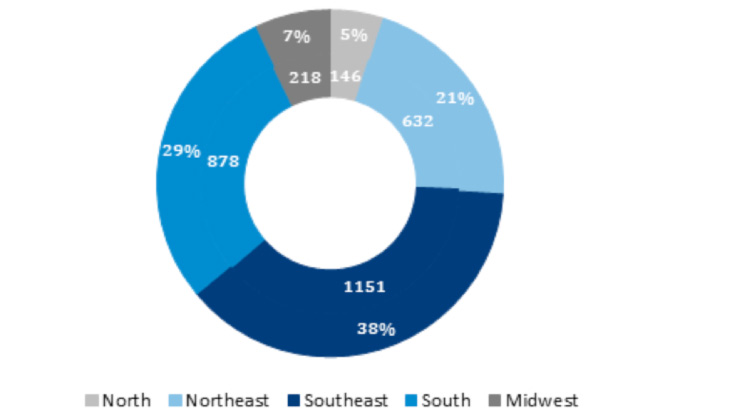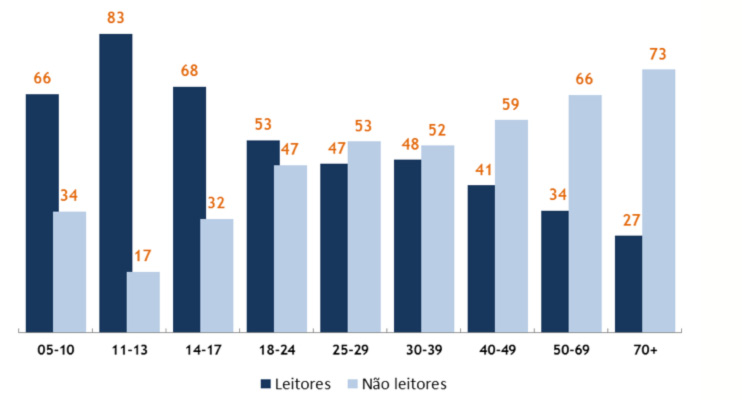
Cultural sectors and industries
The various sectors of culture make very distinctive contributions to the vitality of the country and their importance for cultural activities is not always easily grasped. The following are some highlights of this dynamic, described in more detail in sector-level mappings.
Music
Brazil is a country that stages huge events such as Rock in Rio, now readying its fifth iteration in Brazil in addition to five other versions presented internationally. Ten-day long Rock in Rio draws about 1.5 million people to the city of rock in Rio de Janeiro. In its turn, country music, or sertaneja, originally from agricultural areas and backland regions is performed in hundreds of concerts throughout Brazil, adding tremendous vitality to cities and impelling cultural dynamics.
Funk has a strong presence in slums and outlying metropolitan regions. In addition to live performances, DJs influence fashion based on U.S. styles. Similarly, musical styles in various regions of Brazil draw hundreds or thousands to their events on a regular basis. Concerts and music recording industry events reflect styles such as tecnobrega (literally, techno-kitsch) in the North, forró in the Northeast, and Gaucho traditions in the South.
Several studies point to Brazil's well-organised music industry as the main component of the local cultural economy. Driven by technological innovation, the market in 2012 was split 44% audio, 28% digital and 28% video, with physical-media turnover around US$ 144 million and digital US$ 57.01 million. A point to note is that 80% of this market is for Brazilian music and the rest, world music.
The electronic music overview shows the main events in the cities of São Paulo, Rio de Janeiro, Curitiba and the state of Santa Catarina, which leads the country in terms of producing events in this segment.
Creative economy
From all cultural production related activities, the creative-economy sector encompasses those that contribute most to the economy and spread extensive operations throughout the country, such as fashion, architecture, production for advertising, television, radio and internet. The Creative Industry map provides an overview of these sectors, especially training for professionals, events and key stakeholders.
Folk and religious festivals
Every Brazilian region has its list of festive events that involve thousands of people employed to cater for millions of Brazilian consumers and tourists. Many are religious, folk or regional-tradition events that annually revisiting traditions introduced during the colonial period, often featuring numerous aspects of syncretism as a strong hallmark of Brazilian culture. In addition to carnival, there are numerous equally sizable and relevant festivals mobilizing the public and driving turnover in the culture segment. They include, for example, the dances and festivals named for June saints' days (Anthony, Peter and John) that draw crowds in numerous cities in the North and Northeast, or religious celebrations at Easter. Several other religious calendar dates such as Corpus Christi are tourist attractions that make a substantial contribution to regional economies.
Brazil’s carnival is considered one of the world's greatest merry-making events and, as such, it mobilizes a huge supply chain across the Creative Economy, especially in tourism and beverages. Estimates suggest that some 500,000 workers are involved in carnival-related activities year-round all over the country. Although the official dates, according to the religious calendar, would be end-February and early March, preparations are underway all through the year and numerous groups perform in parallel events at corporate events and shows in Brazil and abroad. Carnival professionals develop techniques for set design and costumes that influence countless creative industries of all kinds.
Cinema
Brazil has numerous filmmakers and every region has its film festivals. Rio de Janeiro, São Paulo and Recife are the main centres for producers and this is a segment of the cultural industry that provides most employment at better salaries. Brazil is Latin America's biggest market in terms of box office revenue. Worldwide, it is 14th in revenues and 10th in ticket sales, according to the European Audiovisual Observatory.
In 2013, cinemas sold 150 million tickets, of which only 28 million were for films made in Brazil. In the same year, 129 Brazilian productions earned about US $ 139 million against total revenue of US$ 0.8 billion at 2,678 theatres nationwide. However just over 2,000 Brazilian theatres are concentrated in 8% of municipalities.
Cultural heritage, museums and exhibitions
The mapping on cultural heritage and museums provides a comprehensive description of Brazil’s historical and cultural heritage preservation system, which has structures in nearly every state and the major cities. Thousands of cultural assets are registered all over the country, and the leading main museums are located in the cities of Rio de Janeiro, São Paulo, Belo Horizonte, Ouro Preto, Tiradentes, Recife and Porto Alegre. In 2011, Brazil had 3,118 museums. Of 5,564 Brazilian townships, only 1,174 had some kind of museum.

According to a study prepared by The Art Newspaper, in 2013, of the world's 12 most popular temporary exhibitions in terms of daily visitations, Brazil hosted four art shows that drew nearly 1.5 million people to museums. Pinacoteca do Estado de São Paulo had approximately 400,000 visitors/year, while Rio de Janeiro's Centro Cultural do Banco do Brasil led with over 2 million.
In 2014/15, the Australian artist Ron Mueck's exhibition alone drew some 230,000 visitors to Rio de Janeiro's Museu de Arte Moderna and about 360,000 to São Paulo's Pinacoteca.
Books and reading
A series of studies focusing books and reading sheds light on the segment's contribution to the country’s culture.
There are now 6,069 public libraries, as well as school and community libraries, and 3,481 bookstores. Numerous events staged all over Brazil are helping to kindle the publishing industry. One way of assessing this cultural sector's growth is the annual number of item publishers are legally required to deposit with the National Library, which average 21,920 books, nearly 40,000 periodicals and 805 iconographic publications (images in general – photographs, prints and art books), according to FGV estimates. These publications are sold in bookstores or newsstands, or distributed to libraries, and their print runs vary.
The National Library reports on a total 42,185 registered publishers, most of them located in the Southeast, with over 56% concentrated in the states of São Paulo, Rio de Janeiro and Minas Gerais.
Reader profiles by age group in 2011 are shown in the chart below. The highest percentage of readers are in the 5-18 age group, reflecting school attendance. Over the last three months that preceded the survey, students read an average 3.41 books, of which 2.21 as school assignment and 1.2 on their own initiative. On the other hand, taking the same indicator of total books read on their own initiative in the last three months, the highest concentration of reading is in the 18-29 age group.

Readers mostly access books by purchasing them directly: from 2007 to 2011, the number accessing a book by purchasing rose by 6 million readers, from 47 to 54 million. Note that numbers accessing books through libraries and schools fell by about 8 million, from 34 to 26 million readers.
Mapping the book sector shows that the publishing industry has gained from the numerous events held on a regular basis as various writers and poets emerge with the perspective of market expansion and strengthening.
Return to Mapping menu

